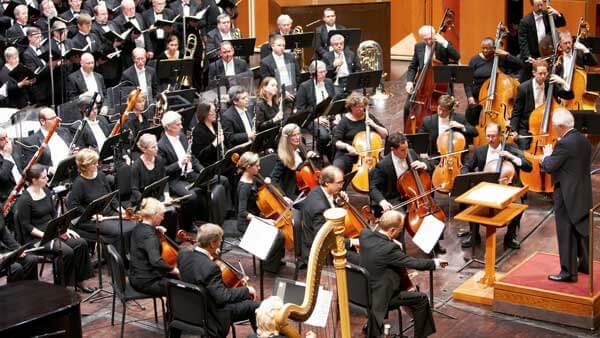During the 2012-13 season, the Milwaukee Symphony Orchestra presented two concerts that caught my attention. The concerts included Berio’s Sinfonia and Lutoslawski’s Concerto for Orchestra. The bravura of the programming raised some questions in my mind. While the Orchestra currently faces the financial hardships that threaten their existence, I sincerely hope that they rally and that their brave programming continues. Many thanks to Isaac Thompson at the MSO for taking time for this interview.
In the 2012-2013 season, the MSO programmed two ‘masterworks’ of High Modernism—Lutoslawski’s Concerto for Orchestra (included in a ‘coffee concert’ no less) and Berio’s Sinfonia with the current incarnation of the Swingle Singers. Lukas Foss’s Time Cycle is scheduled for this coming year. These seem like very bold programming choices to put before historically conservative Midwestern audiences. What is the philosophy behind the MSO’s decision to program these works and pieces like them?
The MSO has the tremendous responsibility and honor of being both a living, breathing cultural organization; as well as an orchestra that serves the Milwaukee community. I think these two things go hand in hand. Of course, it is important that our program offerings are broad and diverse enough to serve as many people in our community as possible (which is why we have a robust pops series, chamber series etc.). It is also equally important to recognize that we are purveyors of this art form, and that we are serving the community by presenting concerts that inspire (and dare I say challenge!) the audience. I am a firm believer in the idea that different works of music speak to each other on any given program — we undoubtedly hear a Brahms Symphony differently when contextualizing it with something from the Second Viennese School, or even something more recent. I would not necessarily say we have programming ‘philosophy’ per se, but a firm belief in what and how we program.

Milwaukee Symphony Orchestra
I happened to attend the Lutoslawski coffee concert and was thrilled when the audience gave the orchestra three rounds of curtain calls at intermission. Are there factors within the Milwaukee music and art scene that may have contributed to the decision to program these works? Signs that may have indicated that this kind of programming might be well received by the MSO audience? Or other factors that lead to these bold choices?
I think that in the age of Wikipedia and the Internet, our world is more curious than ever, and people crave information. They also enjoy making connections between information. I think our audience is extremely curious, and excited about being challenged and learning more. We recently did a focus group study of our audience, and one of the takeaways was the fact that our audience actually enjoys being challenged when they come to a symphony concert, which is a real testament to the cultural vibrancy of our community. Of course, it also helps that Milwaukee boasts wonderful dance, theater, and new music organizations. All of these factors undoubtedly contribute to the cultural literacy of this community, which I find is at a very high level. I think this literacy and community understanding empowers and challenges us to really curate each concert and to present the familiar with new or “bolder” works in an intelligent and thoughtful way.
While the immediate enthusiasm was palpable at the concerts that presented the Lutoslawski and the Berio, what has been the orchestra’s sense of the larger reception of these kinds of works among your audience and among the press? How did you expected them to be received?
I think the response has been overall quite positive. I do not know if there was really an expectation of how they would be received, however, as an institution we thought about how best to present the works to the audience so that they would have all the tools to get the most out of the piece. That was why, for instance, Mo. de Waart spoke to the audience from the stage before the Berio. I think the audience responded very well to hearing his thoughts on why the piece is so important, and why after over forty years, the work is still so powerful.
After the Lutoslawski, the players were beaming. How have the players responded to these pieces during the rehearsal process and after having played them?
I think the orchestra, on a whole, enjoys performing new and challenging repertoire. It of course helps that we have such a tremendous Music Director, Edo de Waart, who has a remarkable history working with contemporary composers, and programming contemporary (especially contemporary American) music. Edo’s ability to get inside a score and really dissect it through rehearsal is remarkable, and I think the musicians respond very well to that kind of hard work.
What advice might you have for similar organizations that might be hesitant to program similar repertoire?
I think the most important thing is to really believe in what you are programming, and be able to articulate its importance to the audience. Through this, you will build trust, which is crucial.






















